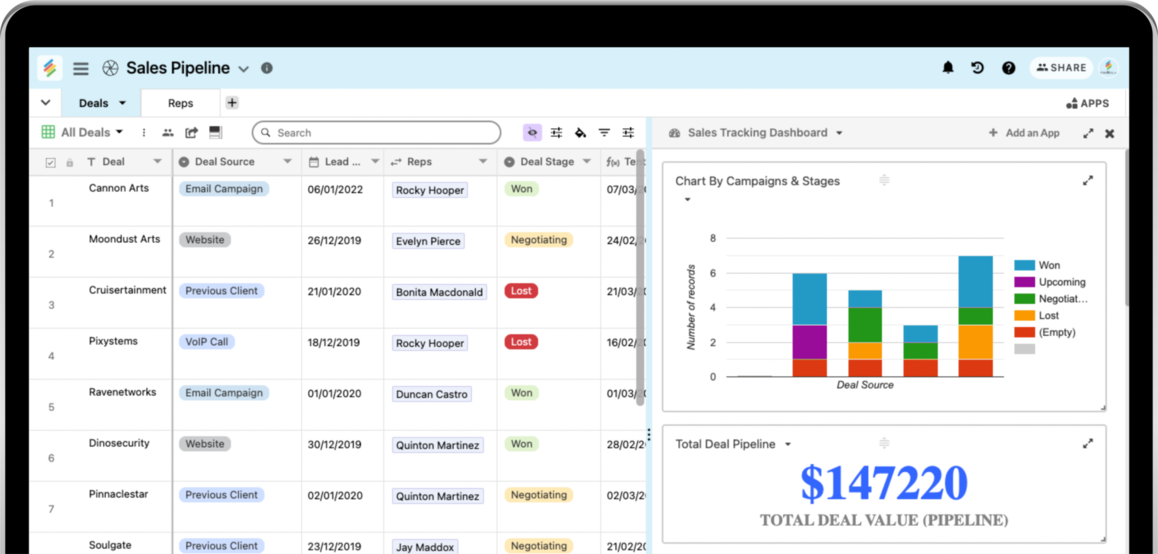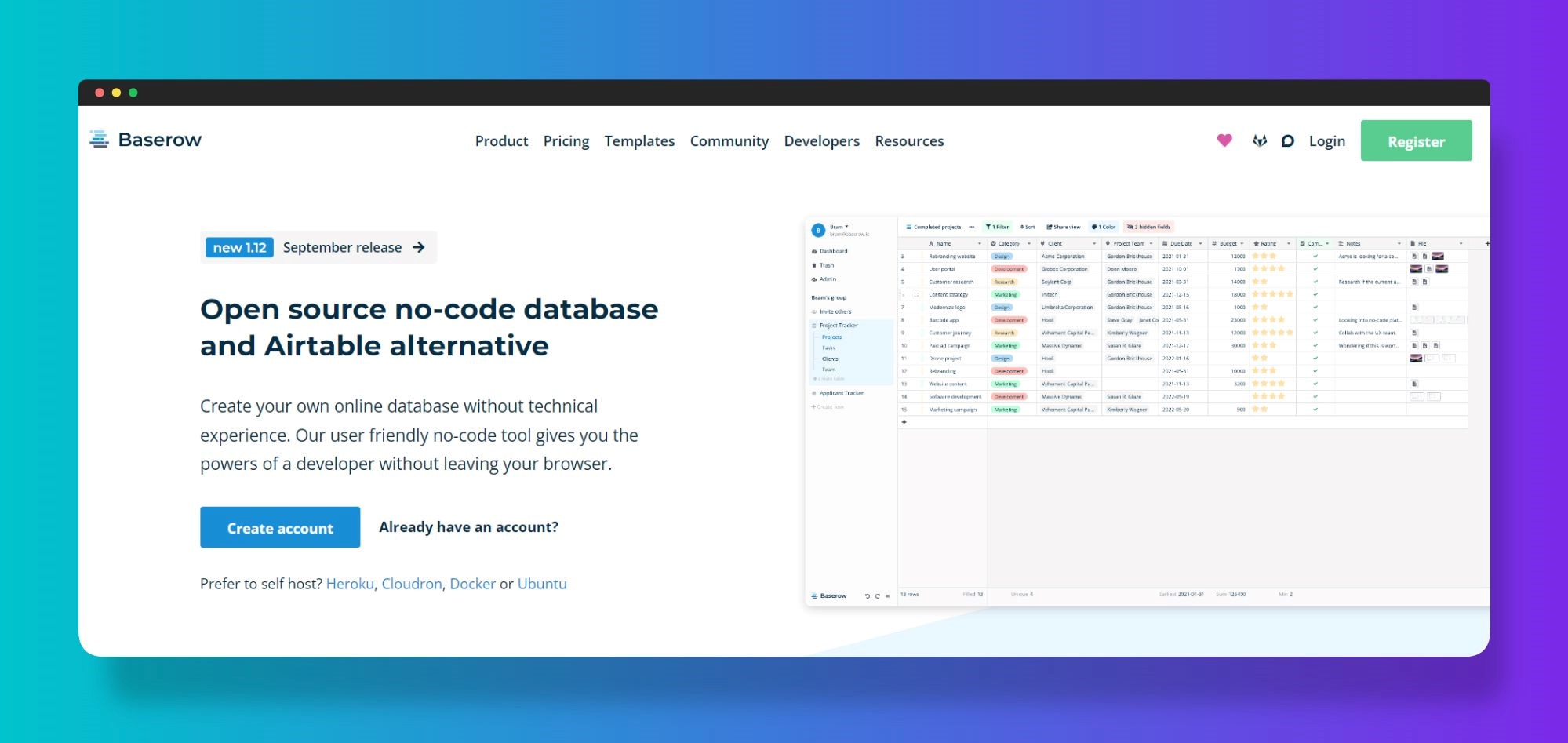Why No-Code is the Future of Open Platform Database Development for Organizations
Why No-Code is the Future of Open Platform Database Development for Organizations
Blog Article
Discovering the Benefits of Scalable Data Sources That Need No Coding Abilities for Reliable Data Administration Solutions
The appearance of scalable databases that get rid of the requirement for coding skills offers a transformative chance for companies looking for efficient information administration services. By making it possible for non-technical users to harness the power of information with instinctive interfaces, these systems improve accessibility and foster cooperation throughout diverse teams. Their cost-effectiveness and adaptability to progressing organization needs can dramatically simplify functional procedures. As we think about the ramifications of such advancements, it ends up being vital to check out just how they can improve the landscape of data administration and drive lasting development in a competitive setting.
Enhanced Access for Users
Boosted ease of access for customers is a vital element of scalable data sources, making certain that information management systems are intuitive and easy to use. In a period where data-driven decisions are critical, access permits a bigger variety of customers, including those without substantial technical competence, to involve with data source systems efficiently. This democratization of data accessibility assists in boosted partnership across departments, equipping workers to extract insights and make notified decisions.
Straightforward user interfaces, such as visual data and drag-and-drop features representation, simplify complex information communications. These improvements decrease the knowing curve related to standard data source management, allowing individuals to concentrate on leveraging data rather than coming to grips with technological complexities. Scalable data sources frequently incorporate adjustable dashboards and real-time analytics, offering users with prompt insights tailored to their particular demands.

Cost-Effectiveness and Source Cost Savings
Effective data monitoring not only rests on access however also on cost-effectiveness and source cost savings. Scalable databases designed for individuals with no coding abilities dramatically lower monetary problems generally connected with typical database administration systems. By getting rid of the requirement for specialized programming proficiency, organizations can designate their sources much more effectively, focusing funds on core business activities instead of considerable training or hiring competent employees.
Furthermore, these databases usually make use of cloud-based options, which further lower prices connected to hardware and upkeep. Organizations can scale their data source remedies according to their needs, preventing the expenses sustained from over-provisioning sources. This flexibility suggests organizations can adjust to changing needs without sustaining unnecessary expenses, causing significant long-term cost savings.
Furthermore, user-friendly user interfaces streamline data access and monitoring procedures, minimizing the moment spent on administrative jobs. This efficiency converts into labor expense savings, allowing teams to concentrate on calculated campaigns instead of regular upkeep. Overall, embracing scalable databases that require no coding abilities cultivates a more economical strategy to data management, making it possible for organizations to maximize their sources while keeping high degrees of functional effectiveness.
Improved Cooperation Across Teams
Furthermore, scalable databases facilitate smooth communication amongst employee. With straightforward user interfaces that call for no coding skills, staff members can quickly produce, modify, and share reports or control panels customized to their particular demands. This democratization of data encourages non-technical individuals to add understandings, enhancing the collaborative environment.
Additionally, these data sources sustain concurrent accessibility, allowing numerous individuals to work with the same dataset simultaneously. This feature enhances performance, as groups can engage in joint data evaluation without the danger of version control problems. The capacity to leave notes or remarks straight within the data source better promotes discussion and next makes clear information analyses.
Streamlined Data Management Processes
In today's data-driven setting, companies recognize the requirement of structured data administration refines to maximize effectiveness and accuracy. By leveraging scalable databases that require no coding abilities, organizations can simplify their information handling and lower the complexities typically connected with typical database systems. This accessibility equips non-technical customers to involve directly with data, helping with quicker decision-making and minimizing reliance on specialized IT personnel.
Structured information management processes improve operations by automating routine jobs such as data entrance, validation, and coverage. Automated data integration ensures that info from various resources is aggregated flawlessly, removing silos and fostering an unified view of crucial service metrics (no-code). Furthermore, straightforward user interfaces permit workers to control information conveniently, allowing them to generate insights that drive strategic initiatives without the need for extensive training.
This efficiency not only speeds up operational procedures but likewise lessens the potential for human mistake, guaranteeing that data stays precise and reliable. Ultimately, streamlined data administration processes through scalable data sources cause enhanced performance, allowing companies to focus on core tasks while ensuring that their information management methods are efficient and reliable.
Scalability for Expanding Organizations

For increasing ventures, the capacity to scale up or down is important. A scalable database can handle an increase of data produced from new consumers, items, or solutions, making certain that business procedures remain nonstop. In addition, these data sources supply the capability website here to handle peak loads efficiently, which is vital throughout periods of rapid development or seasonal spikes.
In addition, lots of scalable database remedies are developed with easy to use interfaces that require no coding skills, encouraging non-technical team to manage data successfully (no-code). This democratization of data monitoring enables companies to allocate sources tactically and reduce dependence on specialized IT workers
Ultimately, taking on a scalable database not just enhances functional efficiency but additionally cultivates an atmosphere where businesses can develop and innovate without the constraints of traditional database systems. special info This versatility positions companies for lasting success in today's competitive landscape.
Conclusion
In final thought, scalable data sources that need no coding skills offer significant advantages for efficient information management. These systems enhance access for non-technical customers, lower operational costs, and promote partnership throughout teams. By improving information administration processes and supplying scalability for expanding organizations, such services allow companies to adjust to altering needs efficiently. Ultimately, the fostering of these easy to use data sources fosters innovation and positions businesses for lasting success in a vibrant environment.
Enhanced ease of access for individuals is a vital element of scalable data sources, ensuring that data administration systems are straightforward and instinctive.User-friendly user interfaces, such as drag-and-drop functions and visual information depiction, streamline complex data interactions. In general, taking on scalable data sources that call for no coding skills cultivates a more affordable approach to data administration, making it possible for organizations to maximize their resources while maintaining high degrees of functional efficiency.
By leveraging scalable databases that call for no coding skills, companies can streamline their data handling and decrease the complexities commonly associated with traditional database systems - no-code.Structured data monitoring processes boost operations by automating regular jobs such as data entry, validation, and coverage
Report this page